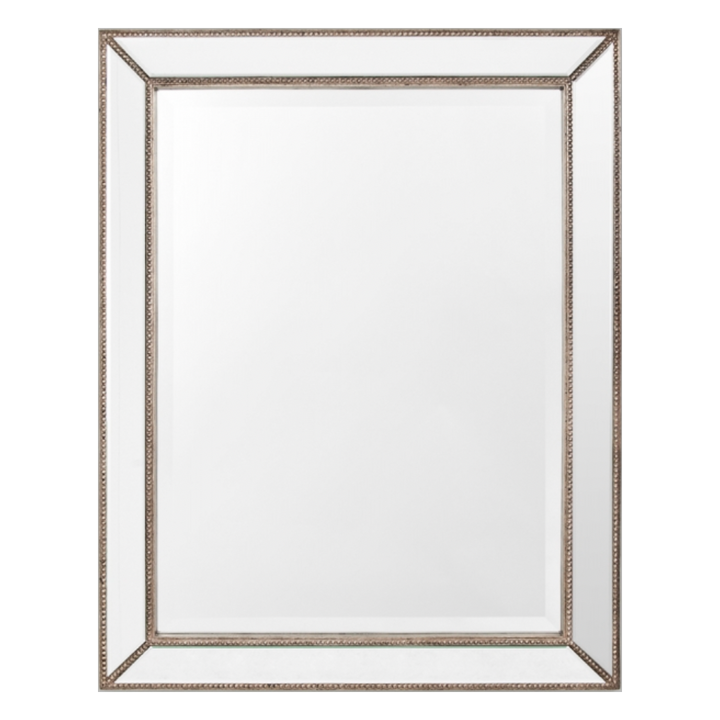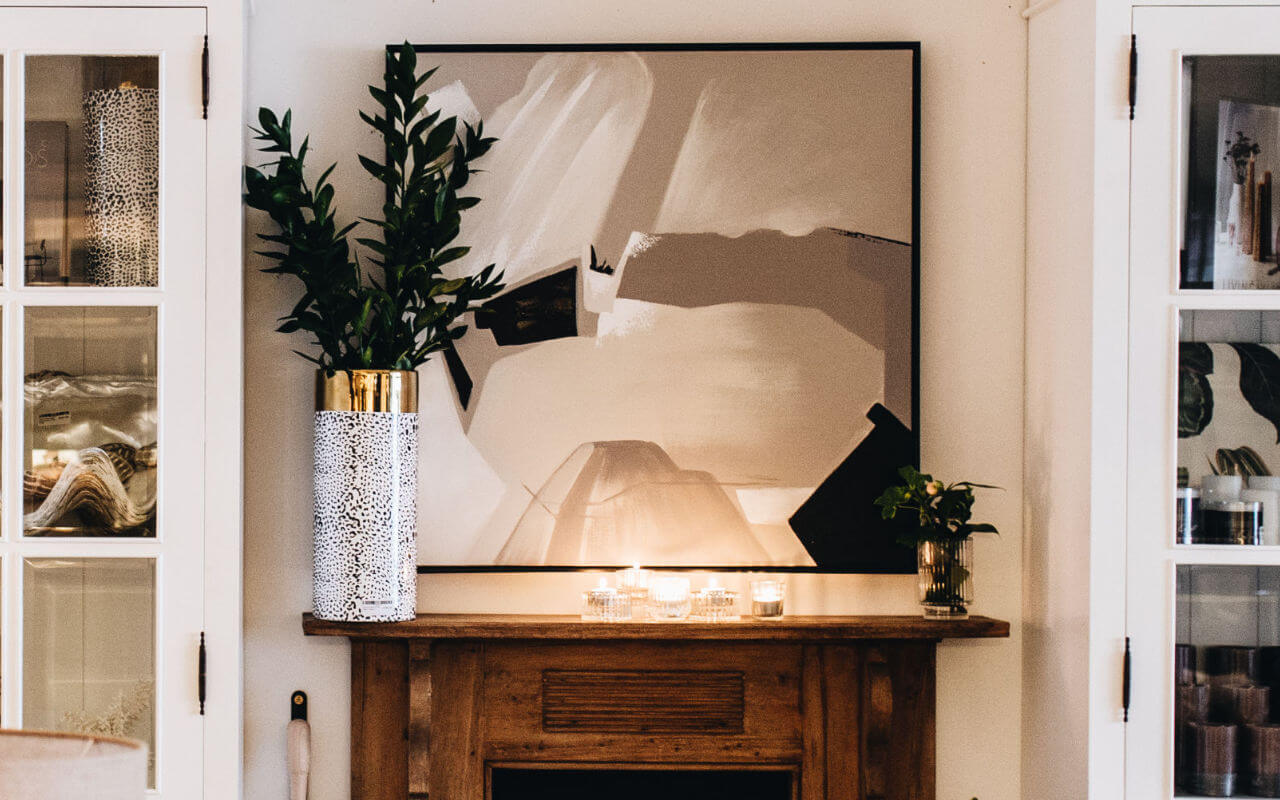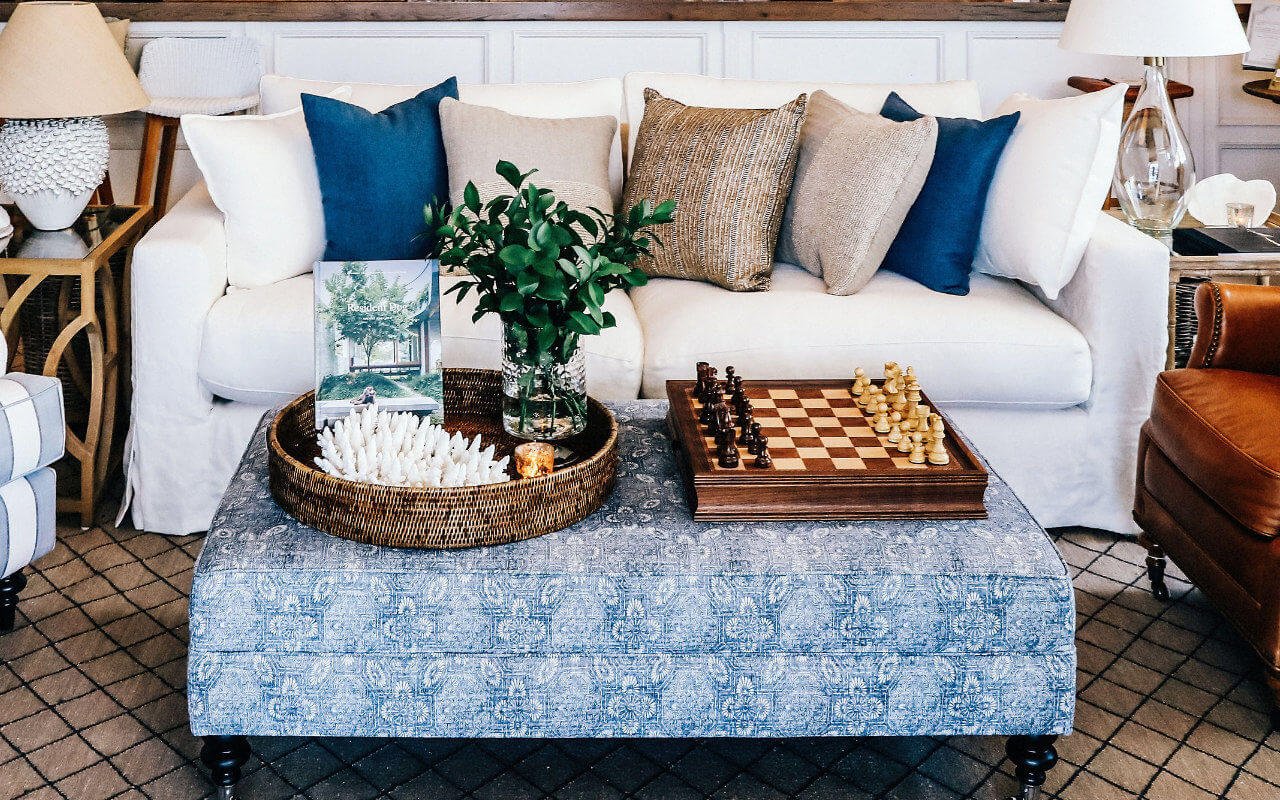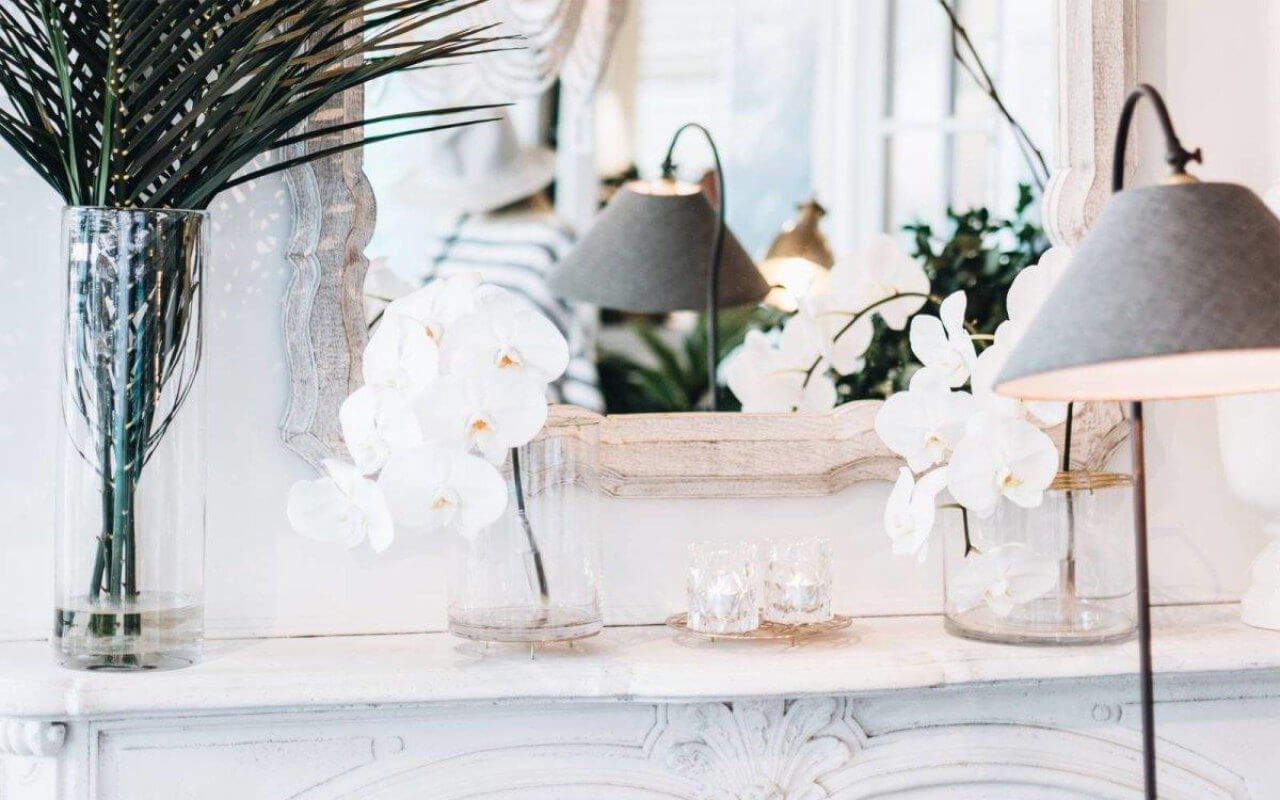Artwork styling is an impactful, stylish, and striking way to introduce colour and pattern in your home while emphasising your existing decor style.
Art and mirrors also form a core component of our 5 Ls of styling; decorating with something loved.
Before we share our artwork styling tips below, for an in-depth guide to decorating with mirrors, we invite you to read our journal “The Magic of Mirrors” here.
SHOP THE STORY
Table of Contents
Photo Source: Jenni Kayne
Artwork Styling Tip #1
How to Select your Wall Art
When sourcing artwork and mirrors for your home, look for pieces that speak to your soul, your personal style, your existing colour palette, and what you love and value most.
Start by exploring each room of your home and noticing opportunities to adorn blank walls with stand-alone statement pieces, a gallery wall, murals, or art prints in a series.
Photo Source: Suzie Anderson Home
Some ideas include:
-
A collection of pressed botanical or floral prints to reflect your love of gardening.
-
An abstract painting that sparks your creativity.
-
A handmade woven tapestry or sculpture sourced from your travels.
-
An oversized framed photograph that captures your favourite nature spot, city, or animal.
-
A gallery wall showcasing special memories with family and friends.
You can also be creative with your choice of frame, swapping out newer frames for antique or vintage finds to reflect your love of history and travel or vice versa.
Photo Source: GP Schafer
Photo Source: Suzie Anderson Home
Artwork Styling Tip #2
How to Hang your Wall Art
Within the interior design world, the consensus is that your wall art should be hung so that the centre of the piece is at average eye level or so that the vertical centre is roughly 140-168cm from the floor.
This range serves as a guide that can be customised to suit the size, shape, and scale of your artwork, your ceiling height, the scale of the room, and whether you are placing art above furniture or a fire mantel.
Gallery-Walls
If you are creating a gallery wall, we recommend spacing each piece roughly 5-8 cm apart, or a maximum of 15cm for a pair of artworks.
Photo Source: Architectural Digest
Above-Furniture Placement
If you are hanging your wall art above furniture or your mantelpiece, it should be 2/3 of the length of the item beneath it and 10-25 cm over the top of the item.
Again, this range will depend on the height, scale, and function of the furniture piece below.
Another important element is to consider the scale of the surrounding space or furniture piece below. For example, if you are hanging your artwork or mirror above a larger sofa, bed, mantel, console, sideboard, or within picture moulding, the artwork should be ⅔ width of the furniture to create a sense of cohesion, harmony, and balance.
Photo Source: Suzie Anderson Home
According to Architectural Digest, the tools you will need to hang your artwork depend on the weight, size, and shape of the artwork, as well as the materials of the target wall.
Hanging tools can range from a pack of small nails to picture hangers, screwdrivers, wall plug anchors and more, so we recommend looking at the manufacturer's instructions for best practices.
For an in-depth guide to hanging your wall art, I recommend exploring this blog article or watching the video linked here.
For a rental-friendly alternative, consider leaning your artwork against the wall instead.
Photo Source: Suzie Anderson Home
Photo Source: Suzie Anderson Home
Artwork Styling Tip #3
How to Display your Wall Art
Here are some of our preferred ways of displaying artwork and mirrors:
-
Embrace symmetry through the central positioning of artwork and mirrors for a streamlined feel.
-
Position your artwork or mirror slightly off-centre for an element of surprise.
-
Use a large statement piece as a focal point to inform the room's colour palette.
-
Use petit and eye-catching mirrors or vintage artwork to fill space within a bookcase or on floating shelves.
-
Mirrors can form part of a vignette on consoles, bookshelves, and bedside tables to reflect the smaller items in front and double their impact.
-
Create a gallery wall, starting with a hero piece to anchor the arrangement following the hanging guidelines above, and then work your way out from there.
-
Artwork can add visual interest and symmetry when displayed behind your bedside cabinets in a matching pair.
-
When it comes to mirrors be mindful of Feng Shui principles. It is not recommended to place mirrors in front of or above beds. We also recommend avoiding kitchen spaces as they can soon become grimy with steam, smoke, frying, etc.
Photo Source: Suzie Anderson Home
Artwork Styling Tip #3
How to Choose Artwork for your Design Style
Lastly, we have compiled a list of artwork and mirror styles below, based on some of our most-loved interior design styles.
If you are interested in more styling tips, we recommend taking our interior style quiz or exploring our step-by-step guides here.
Photo Source: Suzie Anderson Home
Belgian Style:
-
Artwork: Pay homage to Belgian history by mixing art from different periods. Balance contemporary abstract art with old oil portraits, still life scenes, or chippy panoramic wallpapers, either unframed or in simple timber frames.
-
Mirrors: Complete the old-world aesthetic with antique or grid-style mirrors featuring a smoky or distressed appearance. These can be styled above generous mantels, console tables, or frame bookshelves.
Rectangular Iron Grid Mirror

$538.00
For Australia-wide deliveries, a freight quote does apply for this piece. This is not calculated online and will be in addition to your purchase. Shipping & Delivery Options: In-Store Collection: This item can be collected from our Moss Vale store. Freight Quote for… read more
Photo Source: Suzie Anderson Home
British Colonial Style:
-
Artwork: Artwork choices include framed botanical, floral, and animal prints, as well as vintage maps and panoramic wallpapers to create a fresh and stylish look throughout the home.
-
Handwoven and natural artworks of wall-mounted baskets and shell art evoke a feeling of travel and adventure.
-
Mirrors: British colonial-style mirrors are typically made of mahogany, teak, rattan, or bamboo and may feature botanical etchings or carvings.
Coastal Style:
-
Artwork: Collections of vintage family photos, framed vintage watercolour & coastal landscapes, nautical life, framed dried sea fans, and woven baskets add texture, colour, and lustre to the more muted backdrop of the relaxed coastal home.
-
Mirrors: Coastal-style mirrors feature frames of shell art, woven rope, rattan, cane, natural timber, and intricate style carvings. These can be round, curved, arched, or tall and rectangular.
Classic Contemporary Style:
-
Artwork: Artwork choices include contemporary, framed abstract, and monochromatic works, as well as black and white photography, detailed architectural sketches, and botanical drawings.
-
Mirrors: Contemporary mirrors are oversize and are typically round, arched, or rectangular in shape. Frame choices range from delicate lime wash beading to gilt-painted iron or black lacquered mahogany.
-
In this style, we recommend adding contrast by pairing contemporary abstract artwork and sculptures with ornate gilt and Louis XV-style patinated antique brass mirrors.
Edify Mirror in Antique Silver Finish | 98cm x 123cm

$725.00
For Australia-wide deliveries, a freight quote does apply for this piece. This is not calculated online and will be in addition to your purchase. Shipping & Delivery Options: In-Store Collection: This item can be collected from our Moss Vale store. Freight Quote for… read more
Photo Source: Suzie Anderson Home
Country Style:
-
Artwork: Smaller framed vintage still-life, oil paintings, and landscape compositions can be grouped together in kitchen and dining nooks or displayed as part of a vignette on the open shelving.
-
Other ideas include watercolour and sketched botanical prints, oil portraits, or decorative wallpapers. These can be unframed or framed in simple timber, painted, or rustic gilded borders.
-
Mirrors: Country-style mirrors are large, vertical, and arched, with iron or wooden frames to anchor entryways and fireplace mantels.
-
Lastly, oversize vintage clocks made from aluminum or wood with large roman numerals or numbers look fantastic above the kitchen hood and fire mantel.
Hamptons Style:
-
Artwork: Hamptons-style artwork includes botanical, natural history, and tropical framed prints and photographs in slender timber or faux bamboo silver frames.
-
Mirrors: Mirrors range from circular, arched, or rectangular with natural or painted wooden frames, woven rope, or faux bamboo.
Parisian Style:
-
Artwork: 17th-century oil paintings, still life portraits, marble or porcelain sculptures, wall murals and large tapestries can be contrasted with contemporary abstract paintings and beaded antique silver mirrors to accentuate their character.
-
Mirrors: One of the defining features of Parisian style is the inclusion of gleaming gilt mirrors ranging from modern and structural in the form to antique, ornate and timeworn, reflecting speckled aged glass. Look for a signature baroque or painted trumeau mirror with foxed mirrored glass, demonstrating the pleasing patina of age.
Photo Source: Suzie Anderson Home
Scandinavian Style:
-
Artwork: Scandinavian-style wall art is monochromatic or neutral, featuring abstract paintings, nature and wildlife photography and modern botanical prints.
-
You can also incorporate wall-mounted textural or woven baskets and sculptures featuring natural shapes, handmade designs, and organic materials.
-
In a more traditional home, you will also find still-life paintings and oil portraits.
-
Mirrors: Scandinavian-style mirrors are sleek and modern, crafted from teak, steel, or natural timber in circle, rectangular, or curved designs.
Urban Industrial Style:
-
Artwork: Large-scale modern abstract art, black and white photography, old maps, advertising posters, and metal signs are ideal for adorning the long, blank walls. Canvases can be unframed and leaned against the wall, or wall mounted in rustic or sleek modern frames.
-
Mirrors: Arched or rectangular grid-style mirrors in black or white metal frames will add modern drama and circulate the natural light.
Warm Minimalism:
-
Artwork: Artwork choices in warm minimalism consist of large-scale abstract art, textural wall hangings, minimalist prints, framed photography, and neutral textured canvas art.
-
Mirrors: Opt for organic-shaped, circular, or rounded mirrors in entryways, living rooms, and bathrooms. These can be unframed or feature antiqued gold, brass, painted, or cane timber edging.
Thank you for reading today's article on our artwork styling tips.
Remember when designing a home you love, the beauty is in the detail.
With love, Suzie x



















